(TITC) - Hue possesses well-off natural scenery, poetic Perfume River with a system of rich cultural heritage properties. This is an ideal destination for visitors around the world.
Located on the Central strip of land full of sunshine and wind, Hue Ancient Capital is a city rich in long history and traditions. It is famous for its relics, palatial palaces and tombs, along with its unique value and identity.
Here is a suggestion for a 3-day 2-night itinerary in Hue full of experience.
Day 1: Hue Citadel - Thien Mu Pagoda - Huyen Khong Pagoda - An Dinh Palace
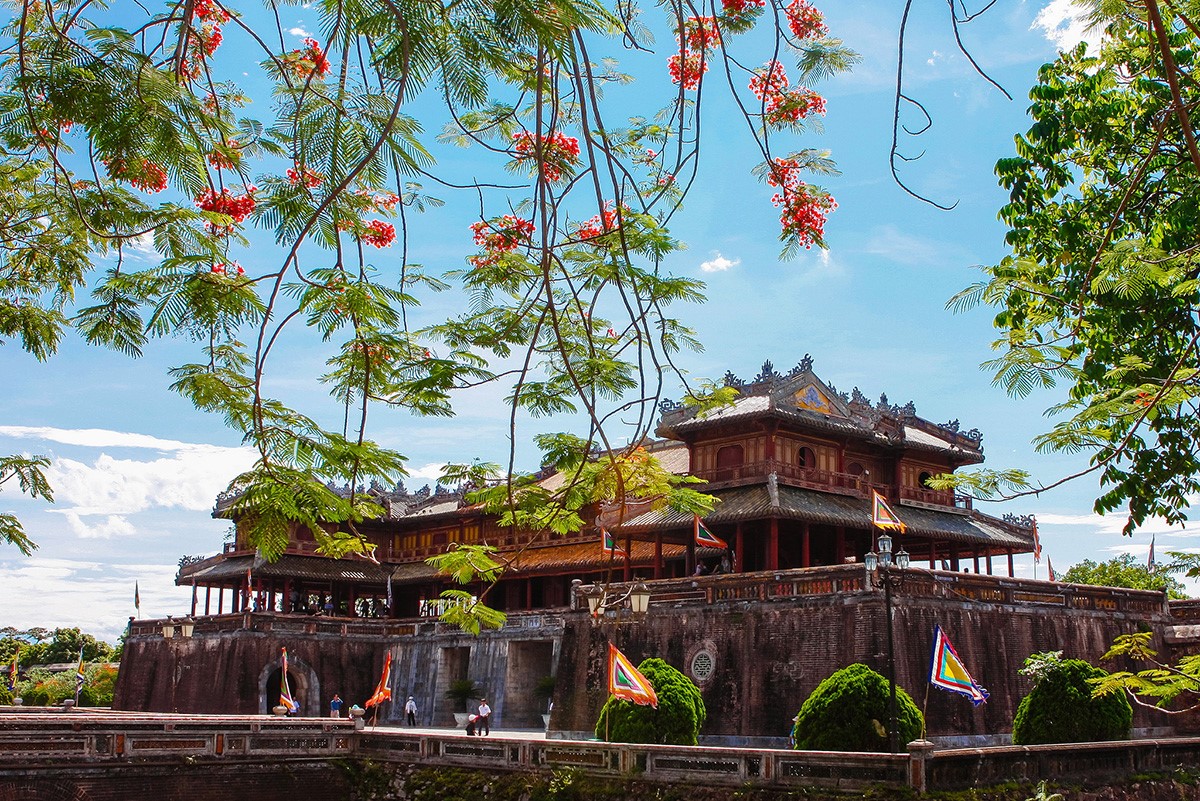
The Imperial Citadel of Hue (Photo: collection)
The first place of the journey is the Royal Citadel – in the Complex of Hue Monuments, recognized by UNESCO as a world cultural heritage in 1993. Hue Citadel carries many special imprints of the feudal period of the Nguyen Dynasty from hundreds of years ago. It is home to the Kings and his royal highness families. The area is quite large with unique palace architecture, dotted with hundreds of large and small magnificent works of beauty.
Moving forward for more than 4 km, on the road along the Perfume River, the second stop is Thien Mu Pagoda, also known as Linh Mu. This is an ancient pagoda located on Ha Khe hill, on the left bank of the Perfume River, built by Lord Nguyen Hoang in 1601.
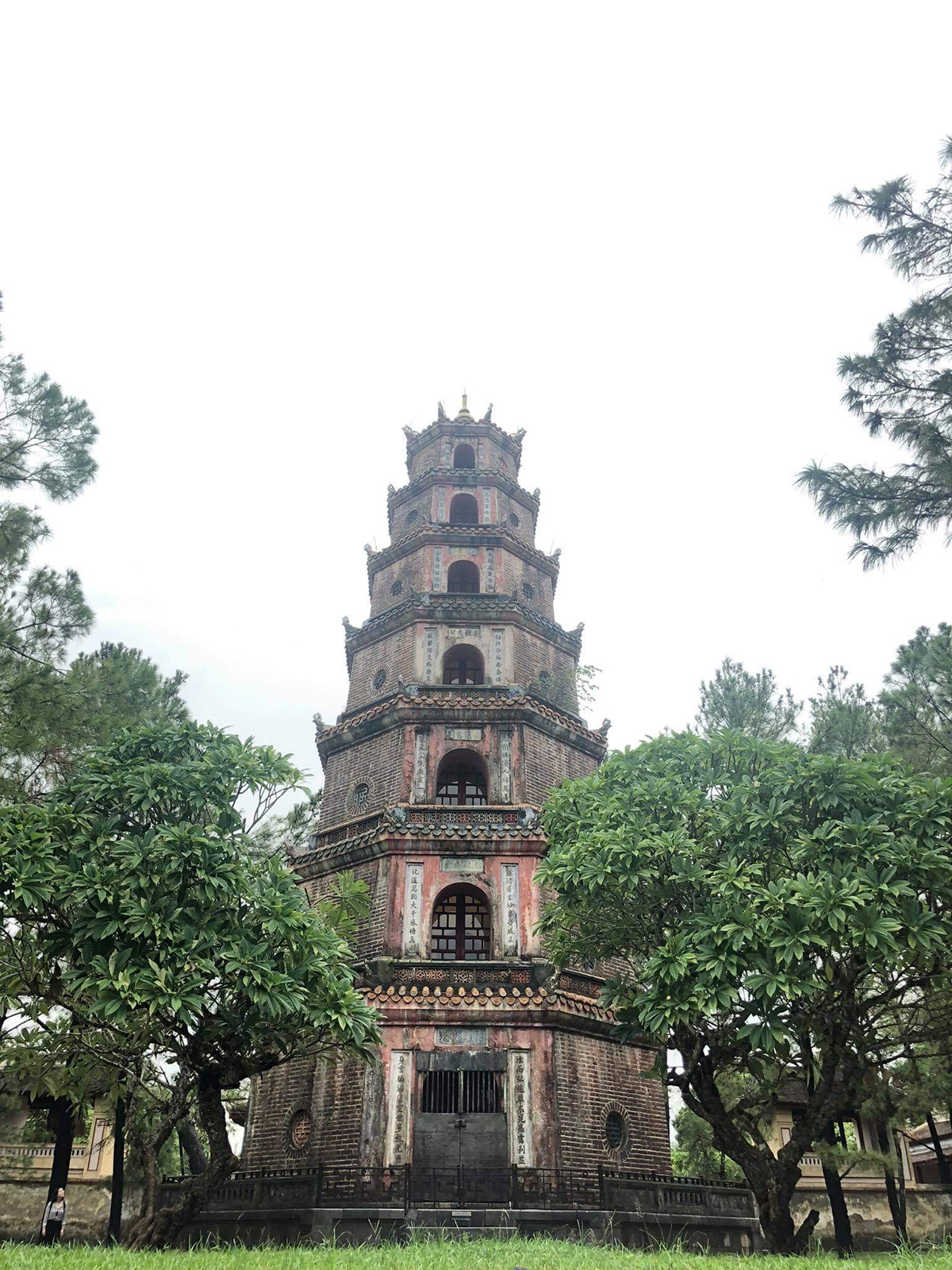
Phuoc Duyen Tower, Thien Mu Pagoda (Photo: TITC)
By time, the pagoda had undergone many restorations but still retains the ancient architecture. Especially, from Thien Mu Pagoda, zooming out into the distance, the peaceful Perfume River narrows down in sight.
More than 2 km from Thien Mu Pagoda is Huyen Khong Son Trung Pagoda. The pagoda belongs to the Theravada Buddhist sect. The harmonious combination of the sophistication of Indian architecture with the simplicity of Japanese, with the identity and soul of Vietnamese culture, the pagoda turns out to be an unique architecture.
An Dinh Palace will be the final destination of this first day in the journey of Hue Citadel exploration. Located right on the bank of An Cuu River, An Dinh Palace is a work associated with many kings of the late Nguyen Dynasty, including King Khai Dinh, King Bao Dai, Queen Nam Phuong and Crown Prince Bao Long.
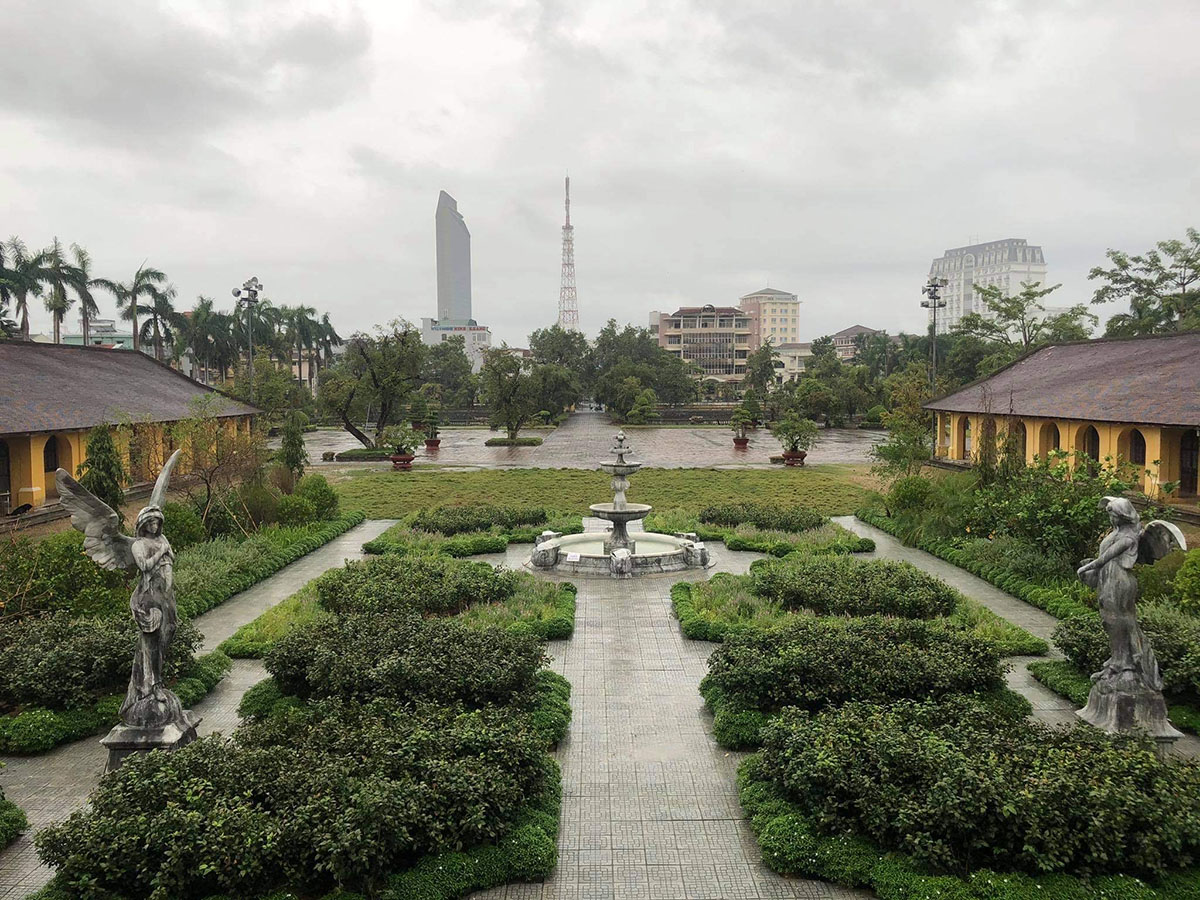
Garden in An Dinh Palace (Photo: TITC)
With fancy European architecture, this palace has appeared in many movies, music videos and as a great place for photoshoots of youngsters.
In the evening, visitors can take a relaxing walk to the pedestrian street, exploring a different Hue and enjoying sumptuous dishes.
Day 2: Tu Duc Tomb - Thuy Xuan Incense Village - Vong Canh Hill - Minh Mang Tomb - Khai Dinh Tomb
After breakfast, let’s start day 2 with a visit to Tu Duc Tomb, formerly known as Khiem Cung. About 6 km from the city centre, lies in a narrow valley in Thuong Ba village, Thuy Xuan ward, Tu Duc tomb is the resting place of King Tu Duc.

Tu Duc Tomb (Photo: TITC)
The architecture here is imbued with the personality of Tu Duc, both majestic yet full of poetic artistry. The small bridges crossing the lotus lake are gentle touches in the spatial architecture here.
On the way to Tu Duc Tomb, don’t forget to stop by Thuy Xuan Incense Village. Along the way from the city centre to Tu Duc Tomb, visitors will see countless incense in bright colours, a unique background for pretty photos.
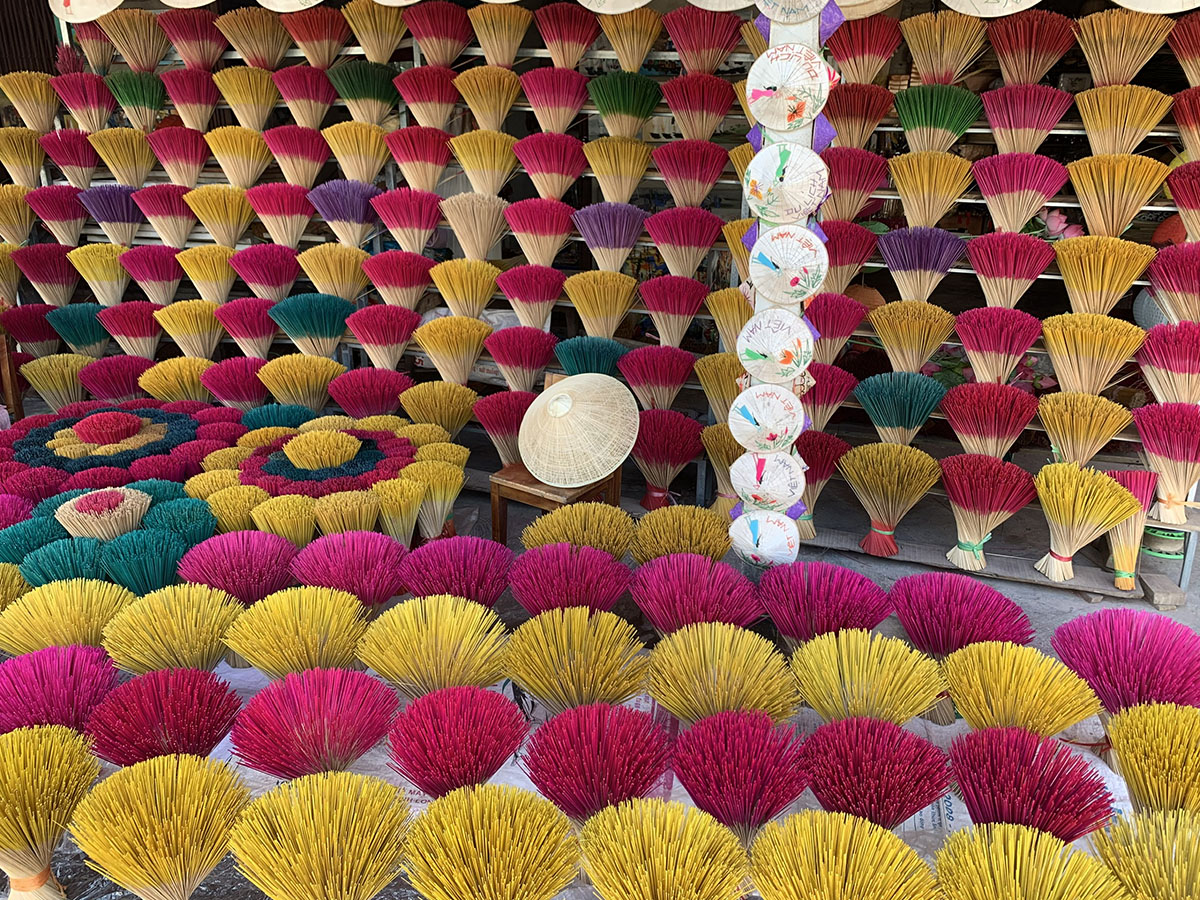
Incense in Thuy Xuan Village (Photo: TITC)
Going further 1.3 km, Vong Canh hill is located near the upstream of the Perfume River. Standing on the vast pine hill, watching the Perfume River drifting by and the majestic Ngu Binh mountain, a peaceful embrace the whole area.
The next stop is Minh Mang Tomb, located on Cam Ke mountain, Huong Tho Commune, Huong Tra Town, Thua Thien Hue Province, more than 6 km away. Like Tu Duc Tomb, Minh Mang Tomb was built in the style of "harmonious nature". With a total area of about 18 hectares, including 40 large and small constructions arranged symmetrically, this place impresses with ancient traditional architecture, imbued with Confucian identity.
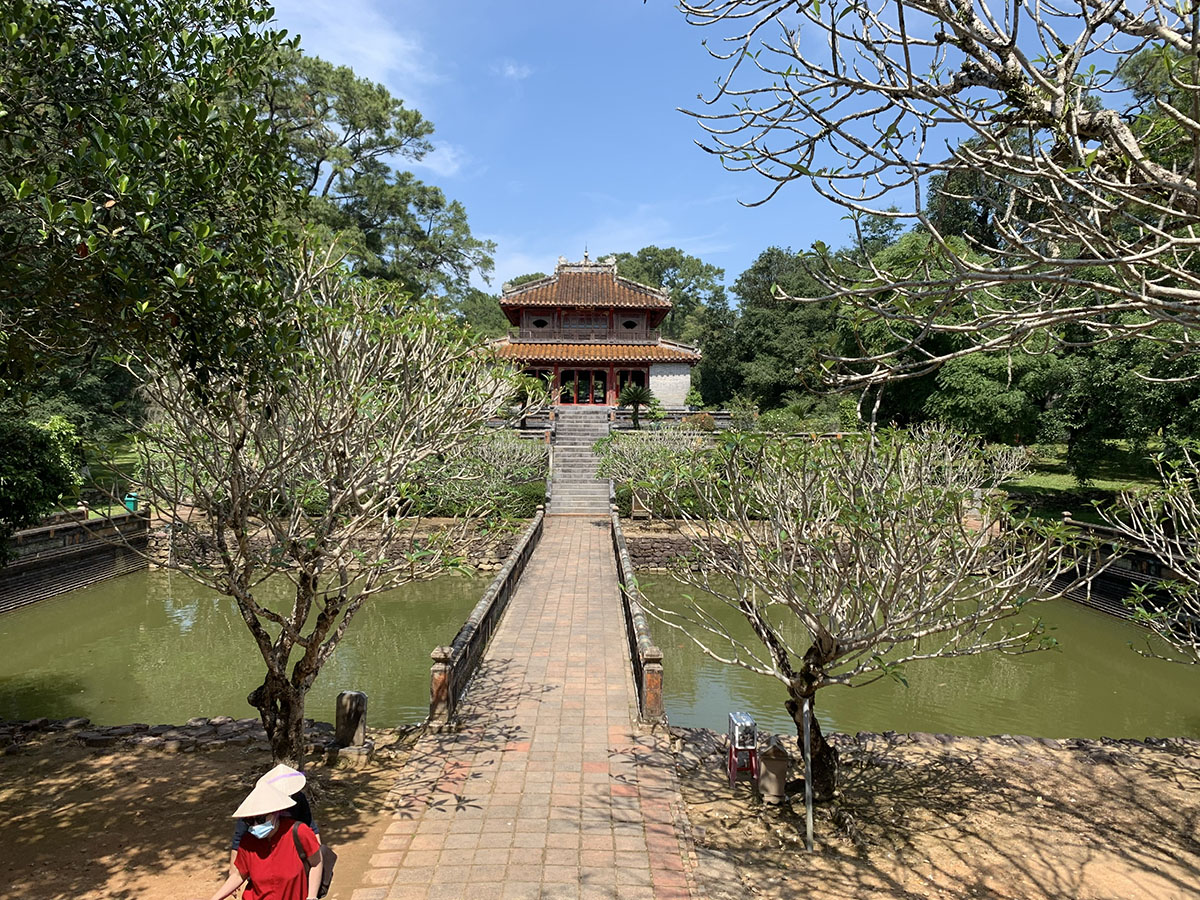
Minh Mang Tomb (Photo: TITC)
On the way back to the Hue City, pay a visit to Khai Dinh Tomb, to feel a contrasting style of mausoleum architecture. About 10 km from Hue city centre, Khai Dinh Tomb is located on Chau Chu mountain, in Thuy Bang Commune, Huong Thuy District, Thua Thien Hue Province. Not possessing a charming landscape like the two tombs above, but Khai Dinh Tomb, on the other hand, makes a strong impression with its elaborate, sophisticated, and extremely magnificent architecture.
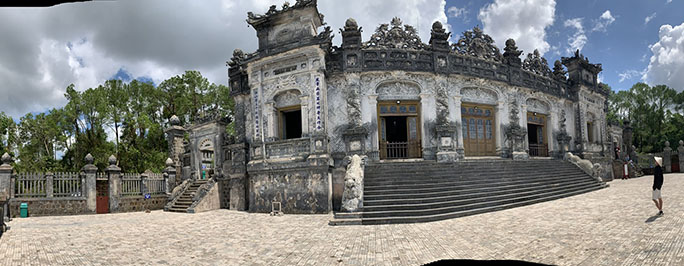
Khai Dinh Tomb (Photo: TITC)
At the end of the day, walking on the ironwood bridge to see Truong Tien Bridge, drinking coffee and watching the Perfume River at night is also a highly recommended experience.

Ironwood bridge with the view of Truong Tien Bridge (Photo: TITC)
Day 3: Dong Ba Market - Quoc Hoc - Hue High School For The Gifted - Hue Railway Station
Finding a place to enjoy the entire cuisine of Hue? Dong Ba Market is the place you are looking for. This market is known by many tourists as a delicious but reasonably priced "eating paradise". A food tour around the market is enough to taste almost the specialities of Hue.
Must-try dishes include: Banh canh (Tapioca noodle soup), Nem lui, grilled pork vermicelli, Ram it cake, turmeric vermicelli, sweet soup, bag yoghurt…
After filling up the stomach, pass by Quoc Hoc - Hue High School For The Gifted. The school has existed for more than 120 years and is located on Le Loi Street, Vinh Ninh Ward. This school is attended by famous heads of state such as General Secretary Tran Phu, General Secretary Ha Huy Tap, Prime Minister Pham Van Dong, General Vo Nguyen Giap… and many prominent scientists, culture, educators, writers and poets such as: Ta Quang Buu, Ton That Tung, Dang Thai Mai, Nguyen Lan, Xuan Dieu, Dao Duy Anh…
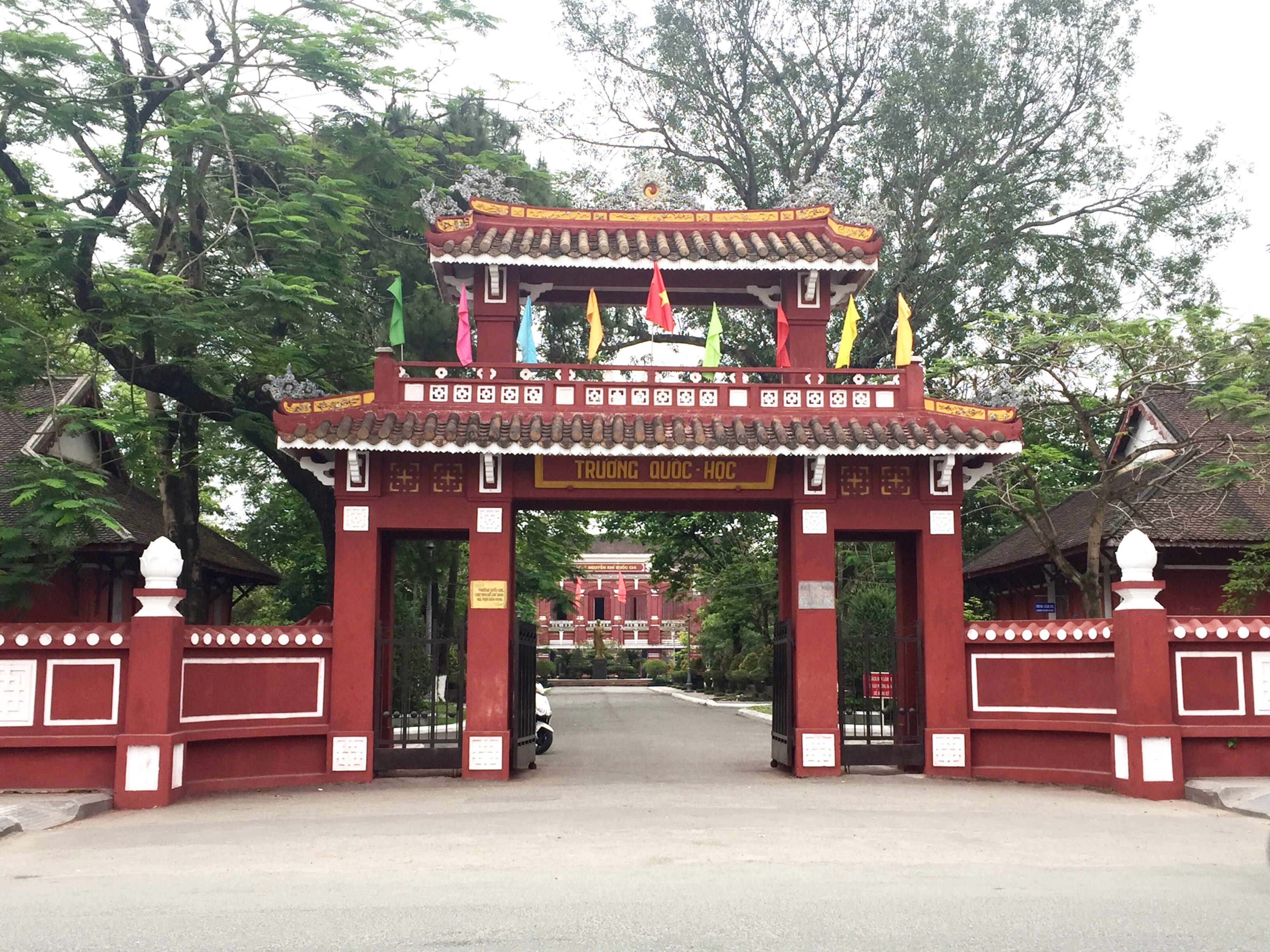
Quoc Hoc - Hue High School For The Gifted (Photo: https://uia.edu.vn/)
With a prime location on the main road overlooking the Perfume River, the school stands out with its brilliant red painted gate. Harmonious blend of French architecture and Asian culture, extremely quality photos can be produced.
In Hue, visitors don’t miss stopping at Hue Railway Station, one of the three most prominent and oldest railway stations in Vietnam. Located on Bui Thi Xuan Street, Duc Ward, Hue Railway Station has existed for more than a century, with typical French architecture, so this is also a check-in place frequented by many people.
What to eat in Hue
Coming to Hue, besides visiting historical works, discovering food is also something tourists cannot miss. Me Keo spicy beef noodle soup, Con Hen mussel rice, Nam Pho tapioca noodle soup, snakehead fish noodle soup, sweet soup with roasted pork filter tapioca cake, kinh fish crispy pancake, ram cake, it cake, beo cake, tapioca cake... are dishes definitely should try.
How to reach Hue
Hue city is more than 670 km from Ha Noi capital to the south, more than 1,000 km from Ho Chi Minh City to the north. Visitors can choose to come here by sleeper bus to save money, or travel by train or plane to save time.
The plane will land at Phu Bai Airport, about 15 km south from the centre of Hue city. Flight time is more than 1 hour 15 minutes to 1 and a half hours depending on the departure point.
Travelling by train is the opportunity to experience slow travel, the travel time is about 14 hours to 17 hours, depending on the departure point from Ha Noi or Ho Chi Minh City.
In Hue, visitors should rent a car or motorbike for ease of movement.
Note
Weather in Hue is fairly hot. Prepare a hat, sun visor and umbrella beforehand, carry water to drink along the visit.
Note that when going to the temples and pagodas, you should wear modest clothes.
Tourism Information Technology Center